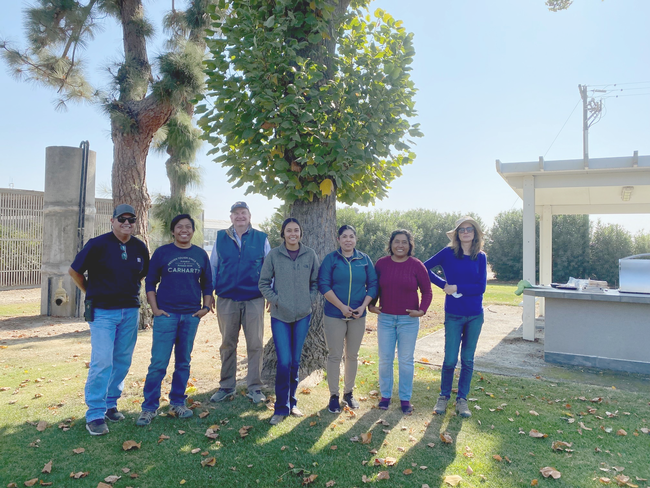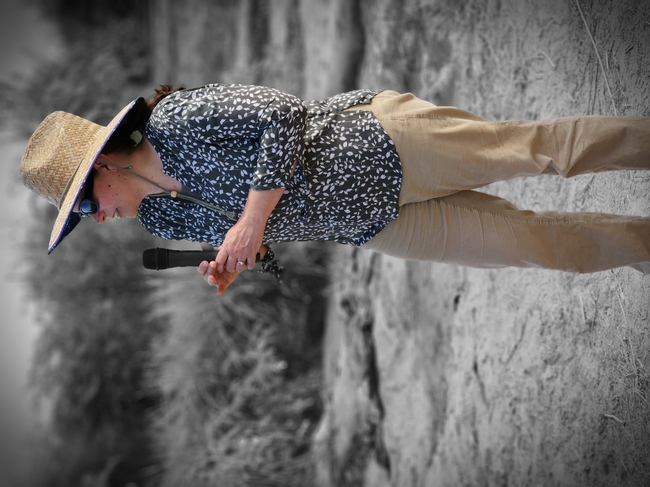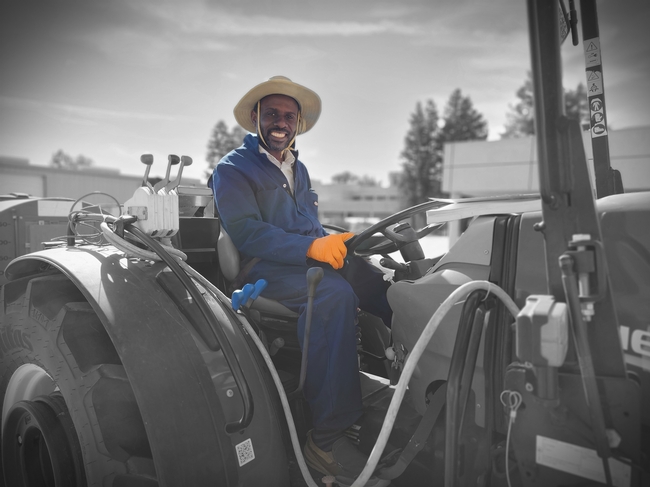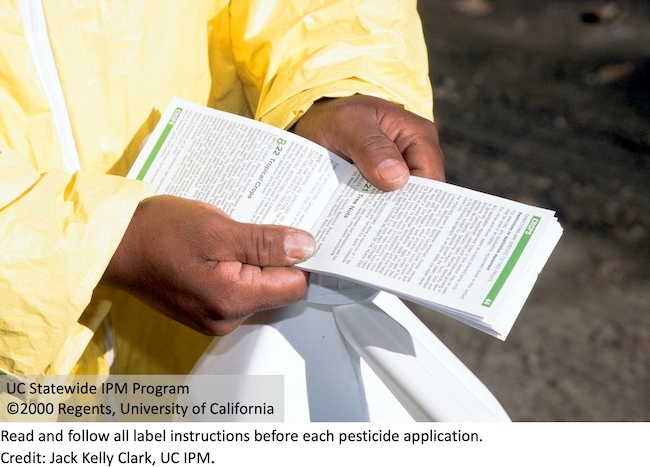Andreas Westphal, UCR Professor of CE Nematology in the Department of Nematology at UC Riverside (UCR) was recently appointed as the Tukuji and Bettie L. Furuta Endowed Chair for his contribution to nematode IPM research in perennial crops. The Tukuji and Bettie L. Furuta Endowment was established in honor of the late Tukuji, who was also a CE Specialist and professor of botany and Plant Science at UCR. His wife Bettie L. Furuta, a horticulturalist and chair of the Watkins Society, donated their estate to support the study of control and pest management of insects and diseases. Westphal follows in their legacy as he continues to conduct research on nematodes, outreach to the community, advisement to growers, and exploring alternative methods for disease management. He is seen with his research group, from left to right Tom Buzo, Rainier Medina, Andreas Westphal, Savannah Coss, Maria Martinez, Zin Thu Zar Maung, Caroline Eberlein, missing Stephen Abbott.
- Author: Ryan D Puckett
Kearney REC's parking lot was filled to near capacity on Wednesday, November 8th as over 130 attendees and vendors came for the Small Farm Tech Expo hosted by UC Cooperative Extension, Community Alliance with Family Farmers and Small Farm Tech Hub. Early in the morning, guests arrived to fill coffee cups and grab pastries at the sign-in tent as they mingled with old and new friends alike in preparation for a full day's itinerary. Interpretations were available in Spanish, Punjabi, Hmong and lu Mien. Prior to a networking lunch, field demonstrations were made for small ag robots, weed management equipment, irrigation systems and soil moisture sensors. UCCE's Small Farms group had previously planted a variety of cruciferous vegetables in their organic plot on the station. This was where the vendors were able to provide hands-on field demos for their products. After lunch, a workshop was open to facilitate access to grants for purchase of farm equipment. The day concluded with side sessions and last chance networking. Everyone was kept busy and fully engaged. The Small Farm Tech Expo at Kearney was as successful as the fall day was cool and lovely.
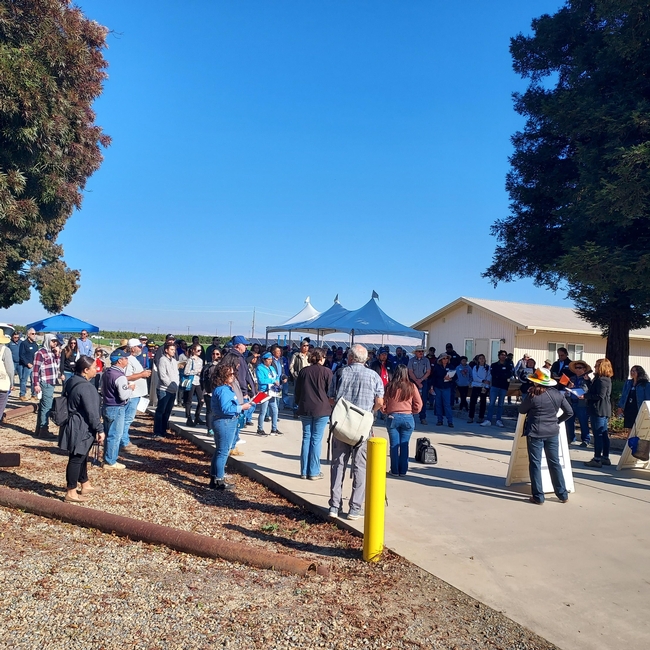
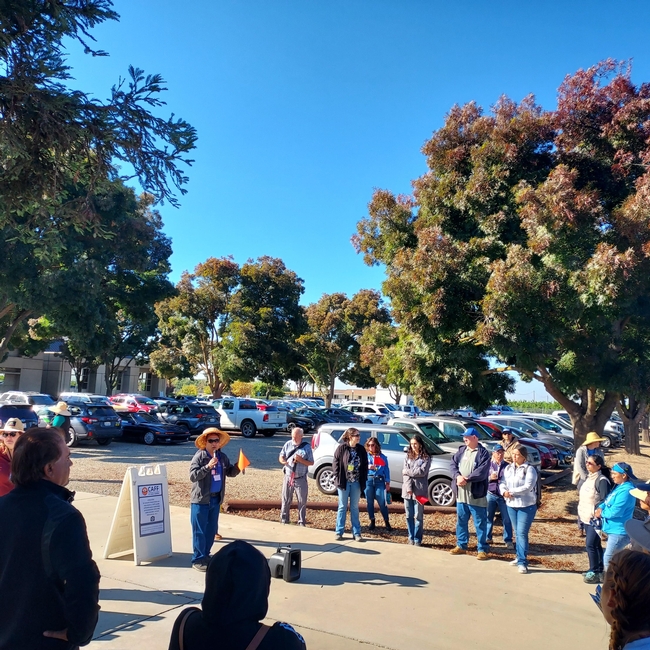
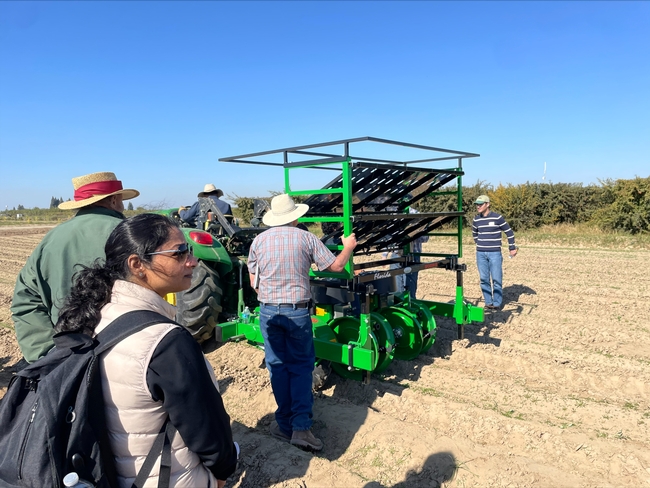
- Author: Ryan D Puckett
A perfect fall day for a visit to the Kearney Ag Station greeted new ag education professionals from the California Agricultural Teachers Association on the 7th of November. The young teachers were from all corners of California; from Tulelake to Coachella Valley, from the Bay Area to the neighboring Sanger. Over fifty participants were in town for professional development seminars at Fresno's Selland Arena and spent the day visiting Rosa Brothers Dairy in Hanford and the Kearney farm here in Parlier. We loaded on the tram and made our way though the orchards, vineyards and fields where research is conducted on the station. Even through we were late in the season, there was still plenty to see, especially the changing color of foliage in the walnuts, stone fruit and pomegranates. There were even some fruit to be collected by the teachers and they gathered souvenirs of fan-shaped kiwi, apples, pomegranates and walnuts. We stopped by one of the insectaries on campus and said hello to the leaf-footed bugs and the spotted-wing Drosophila. Our tour was concluded at the greenhouses where the teachers inspected research in progress and contemplated greenhouse projects for their students. They were an engaged group, and their students are in good hands to be inspired by this group of ag education professionals.
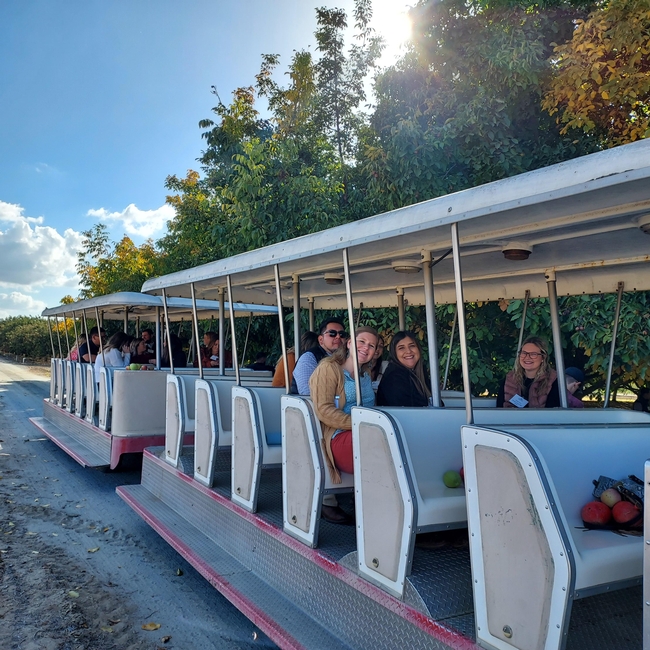
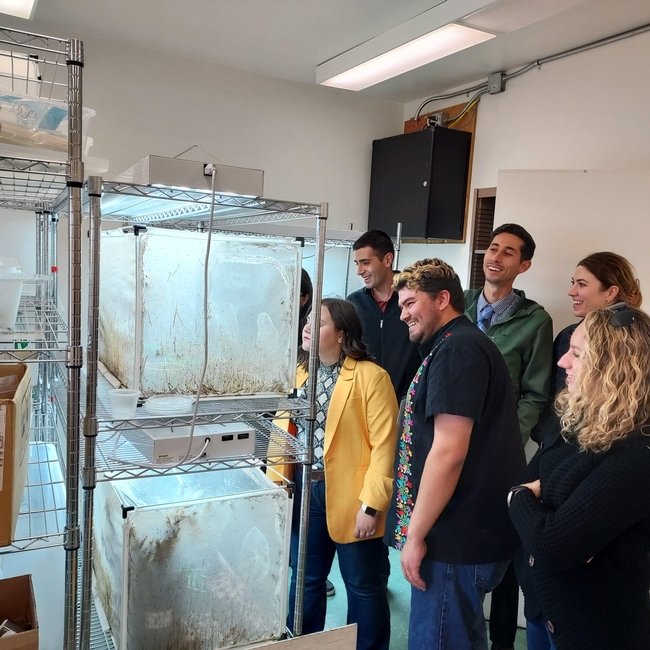
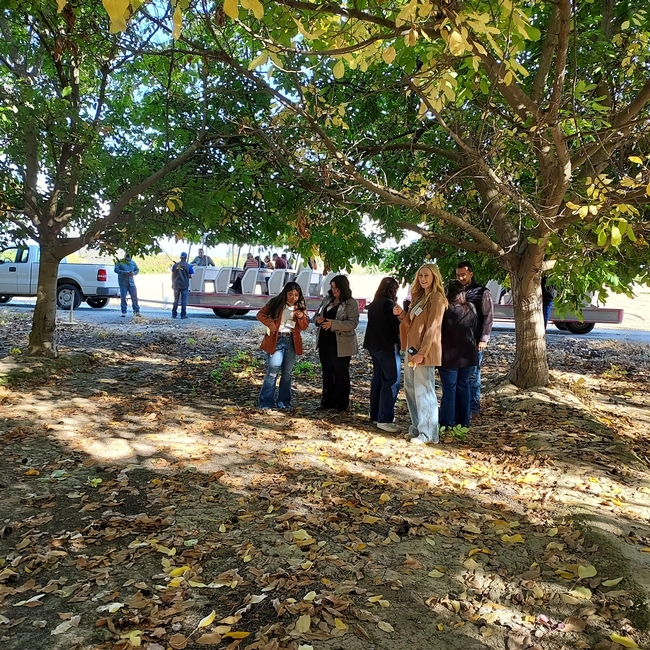
- Author: Ryan Puckett
More than 50 attendees of the CDFA Fertilizer Research and Education Program/Western Plant Health Nutrient Management Conference in Visalia visited Kearney Agricultural Research and Extension Center on Oct. 25. The three-hour farm tour featured spectacular fall weather and informative talks by Kearney researchers and post-docs, UC Cooperative Extension farm advisors and specialists, and U.S. Department of Agriculture collaborators. In addition to receiving three hours of continuing education credits, the tram riders soaked in the abundance of diverse crops and research at the station.
Chad Anders, a crop consultant with Dellavalle Lab in Fresno, appreciated the information presented by Brent Holtz, UCCE farm advisor and director for San Joaquin County, saying, “Whole orchard recycling, I have clients that are pondering whether or not to get into that.”
With good humor, Holtz engaged the audience with the design of the experiment and the resulting practical data: that orchard recycling (shredding and incorporating the old orchard into the soil prior to planting new orchards rather than burning or hauling away the wood) can save growers water and enable better use of nitrogen.
Ruth Dahlquist-Willard, UC Cooperative Extension small farms advisor for Fresno County, discussed her team's moringa and lemongrass projects and how they are helping local growers and then answered a flurry of questions from her captive audience. “I learned about a new plant that I didn't know existed,” said Breanna Saint Pierre with the State Water Board. “Moringa is a very interesting crop.”
Agricultural entrepreneur Nick Cizek, who runs an automated performance testing business, was impressed by the talk on insect pests of the hemp crop given by Kadie Britt, post-doc researcher with Houston Wilson's entomology lab at Kearney. “That was cool to see research on a crop that has been generating so much buzz,” he said. With a Ph.D. in physics, Cizek was also attuned to the talks given by Daniele Zaccaria, UCCE water management specialist, on cover cropping in pistachio orchards, especially when terms and abbreviations such as “albedo,” “PAR” and “NIR” were sprinkled into the conversation.
Khaled Bali, interim KARE director and UCCE specialist, and Rachel Shellabarger, California Institute for Water Resources academic coordinator, described their FREP-funded project to improve nitrogen and irrigation management through on-farm consultations, demonstrations and training.
UCCE specialist Jackie Atim and UCCE specialist emeritus Bob Hutmacher described the sorghum research at Kearney and implications for drought-impacted farming. Adjacent to the sorghum plot, which had recently been sampled for biomass and chopped, the tour perused an unfamiliar kiwi orchard and an extremely rare tea planting, which is being evaluated by UC Davis chemistry professor Jacquelyn Gervay-Hague.
USDA-ARS agronomist Sultan Begna discussed plans for his trial that seeks to demonstrate the economic potential of intercropping alfalfa in young almond orchards at Kearney. This project is an example of several ongoing collaborations between Kearney academics and USDA-ARS scientists.
When our tour group stumbled upon UCCE specialist Peter Larbi astride his new tractor preparing for his air blast sprayer calibration training at Kearney on Nov. 4 and 18, he was gracious enough to inform the group about his research.
Other topics covered on the tour by Kearney research staff included groundwater recharge in alfalfa by Bali and project scientist Moneim Mohammed, Solbrio grapes and Sunpreme raisins by UCCE specialist Matthew Fidelibus, cover crops in pistachio orchards as a means to reduce navel orangeworm emergence from mummies on the orchard floor by UCCE specialist Houston Wilson, solar powered treatment of brackish water by UCCE specialist Daniele Zaccaria and staff research associate Luke Paloutzian, and the effects of soil bio-stimulants to reduce water stress in almonds was discussed by UCCE specialist Giulia Marino.
The attendees asked thoughtful questions, including many about crop water usage. The speakers made a lovely drive through Kearney Agricultural Research and Extension Center a unique and diverse educational experience.
- Author: Petr Kosina
To raise awareness of pesticide safety practices, February is celebrated as National Safety Education Month. This year the University of California Statewide Integrated Pest Management Program offers help to refresh your knowledge about safe and effective pesticide use. Two frequently sought-after online courses focused on proper pesticide use to avoid illegal residues and proper selection, use, and removal of personal protective equipment are offered for free during the month of February. Use code safety100 at checkout to get your continuing education units (CEU) for free.
Pesticides are among the most regulated chemicals in the country. In the United States, the Environmental Protection Agency (EPA) regulates the use of pesticides. All pesticides must be registered with the EPA, and the agency requires a battery of scientific tests to determine the potential risk to humans and the environment.
Best practices for using pesticides safely start with reading the label before each pesticide application. How will reading the label help you? Pesticide labels answer most of the basic questions you need to know about the product, its safe application and handling. Always make applications in strict accordance with all label instructions. Following label instructions will ensure safe, effective, and cost-effective use of the pesticide. Apart from the label, it is important to know what your state regulations are because some state regulations that also have to be observed are not written into the label. Note that not all pesticides approved by the EPA and available for purchase in the United States can be used in California. California is one of the few states that have more strict pesticide regulations for certain pesticides than what is required by the EPA. Even if you have used a given pesticide in the past, make sure you have an up-to-date label, as EPA may occasionally change labels. To learn more about pesticide labels and how to extract information relevant to the specific setting and situation in order to apply pesticides safely, enroll in the online course Proper Pesticide Use to Avoid Illegal Residues. Pest management professionals will earn 2.0 hours of Laws & Regs CEUs.
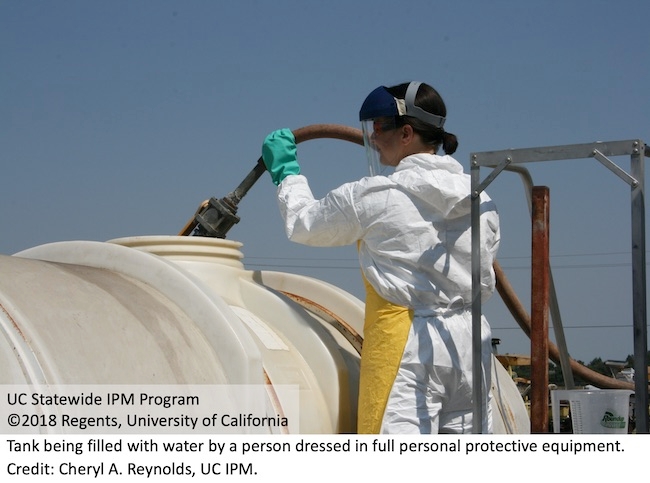
Visit the UC IPM website to see all 22 online courses that are available for continuing education credit.


